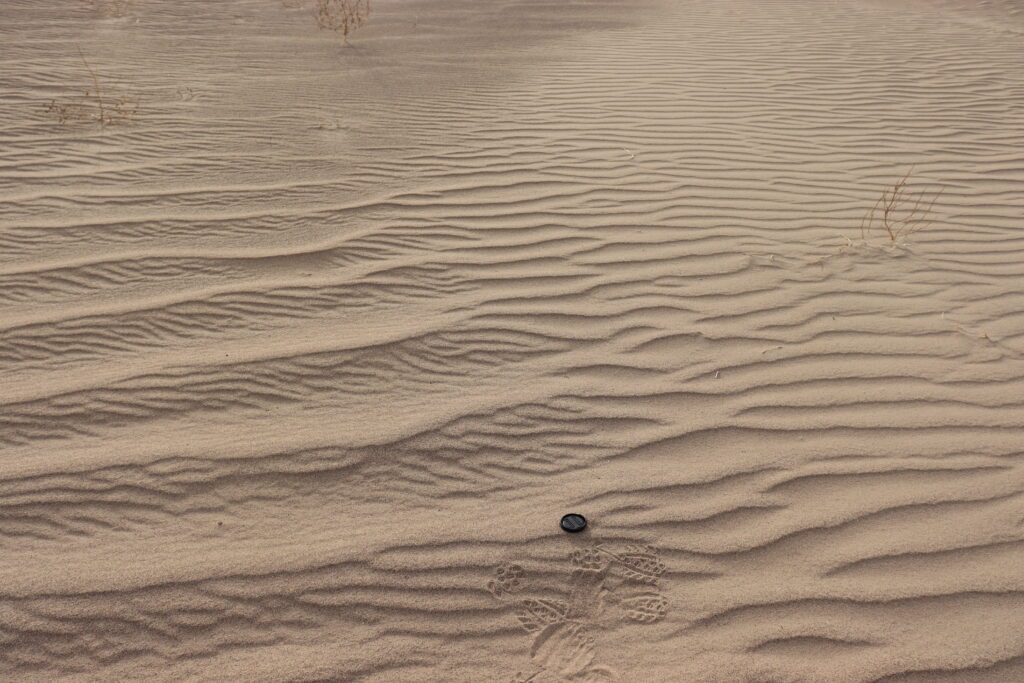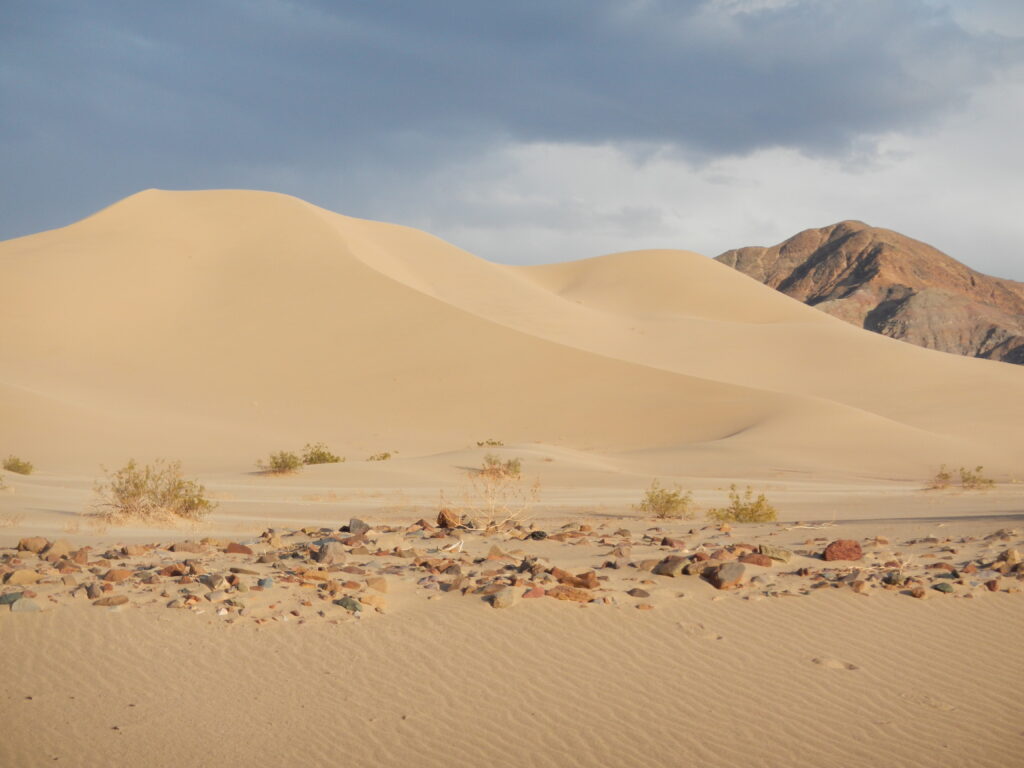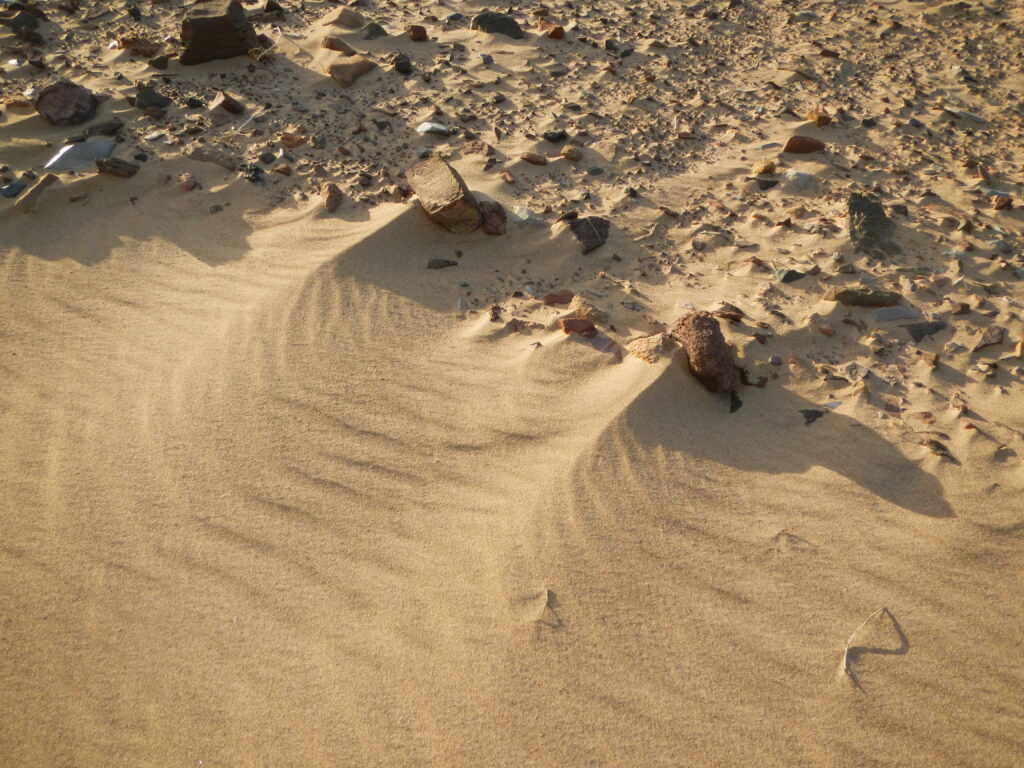Ibex Dune Field
Death Valley National Park, California
Ibex Dune Field is located near Saratoga Springs in Death Valley National Park. Prevailing winds cause sand to accumulate on the windward side of the Saddle Peak hills. Ibex Hills is seen to the left of the highest dune peak. This accumulation is exhibited as wind ripples near the camera and great dunes seen in the distance which give this landscape its name.
Ripples, Meggaripples, & Dunes
More Ibex Videos:
Wind ripples and dunes form through aeolian erosion, transport of sediment via wind. Deflation is the process of surface erosion that removes loose fine grained material by the turbulent action of wind. Methods of deflation are known as creep, saltation, and suspension which coalesce into the patterns seen in the dune field.

Creep- Larger and heavier sands move short distances, rolling on the surface
Saltation- Fine grained sands are lifted into the air and bounce, hop, skip, jump along the surface, able to travel long distances
Suspension- Small sand grains are catapulted into the air, able to travel very long distances

Observe spectacular wind ripples in the Ibex Dune Field as the fingerprint-like pattern in the sand. The wind ripple marks show some symmetry in wind direction, although not completely uniform. Crests and troughs of the ripples form lineations. The wind direction is perpendicular to the lineations seen in the sand. Each adjacent crest marks the length of a bounce during saltation. The coarsest grains collect at the crest while finer sands collect in the troughs, known as inverse grading. The ripples have a ‘stoss’ and ‘lee’ side. The stoss side is the shallower upwind slope which can also be thought of as the windward side, the side being blown by the wind. The lee side is the downwind slope. Establishing the stoss and lee sides also aid in determining wind direction. In the distance towers a golden sand dune.
Fig 2: Wind Ripples on Barchan Dune, Afghanistan(Kempf EK, 1986)


Megaripples are also visible here! Aeolian Megaripples have larger spacing between wavelengths. Wavelengths between crests are roughly 4 times the saltation length. They have bimodal distributions of sand sizes, coarser and finer sands constitute megaripples with coarse grains at the crest and finer grains within the interior. Megaripples form when a strong enough wind blows, grains are lifted and accelerated by wind then pulled back down by gravity. Impact with the surface can eject other grains by imparting energy and momentum onto the surface. This bombardment process cascades to form these bedforms that are perpendicular to wind direction and indicate strong winds in this area. Megaripples are seen in other locations on Earth and have been seen to migrate on Mars.

The Ibex dunes can reach 30 meters in height and are mainly classified as star dunes. Star dunes form as wind blows from at least 3 directions. The sand accumulates in the crest and trough/ stoss and lee fashion that exhibit grain sizes of sand decreasing from crest to trough. This is known as normal grading. The finest sands are at the top, while the larger grains remain in the trough. As sand accumulates at the crest of the dune a critical angle determines when the stoss side will fail and avalanche sand into the lee slope. This is called the angle of repose and occurs at a 30-34 degree angle. The process of building up sand and failing at that angle is the basis of dune migration and allows entire dunes to travel!



Vegetation is seen in the dune field and may act to stabilize these bedforms and impede sediment transport but its role in these dunes is not yet known.


Larger clasts can be seen in the video as well as vegetation. These photos show a piling up of sand on one side a rock. The rocks are obstacles against sediment transport. The wind and sand hit the rock, lose momentum and are pulled in on the leeward side which explains the accumulation of sand on one side, and shows the direction the wind blows.
Understanding these concepts can develop an intuition on how these small patterns give us a greater understanding of how dune fields are migrating on a very large scale, showing us that live dune fields are far from stagnant, they are transforming and moving things that act on a relatively short timescale, geologically.
The Ibex Dunes are relatively untouched areas with low moisture levels and terrain that may be a great analog to Martian landscapes, offering another key to understanding other planets in our solar system as we enrich our understanding of Earth.
Author: BreeAnn Getman

